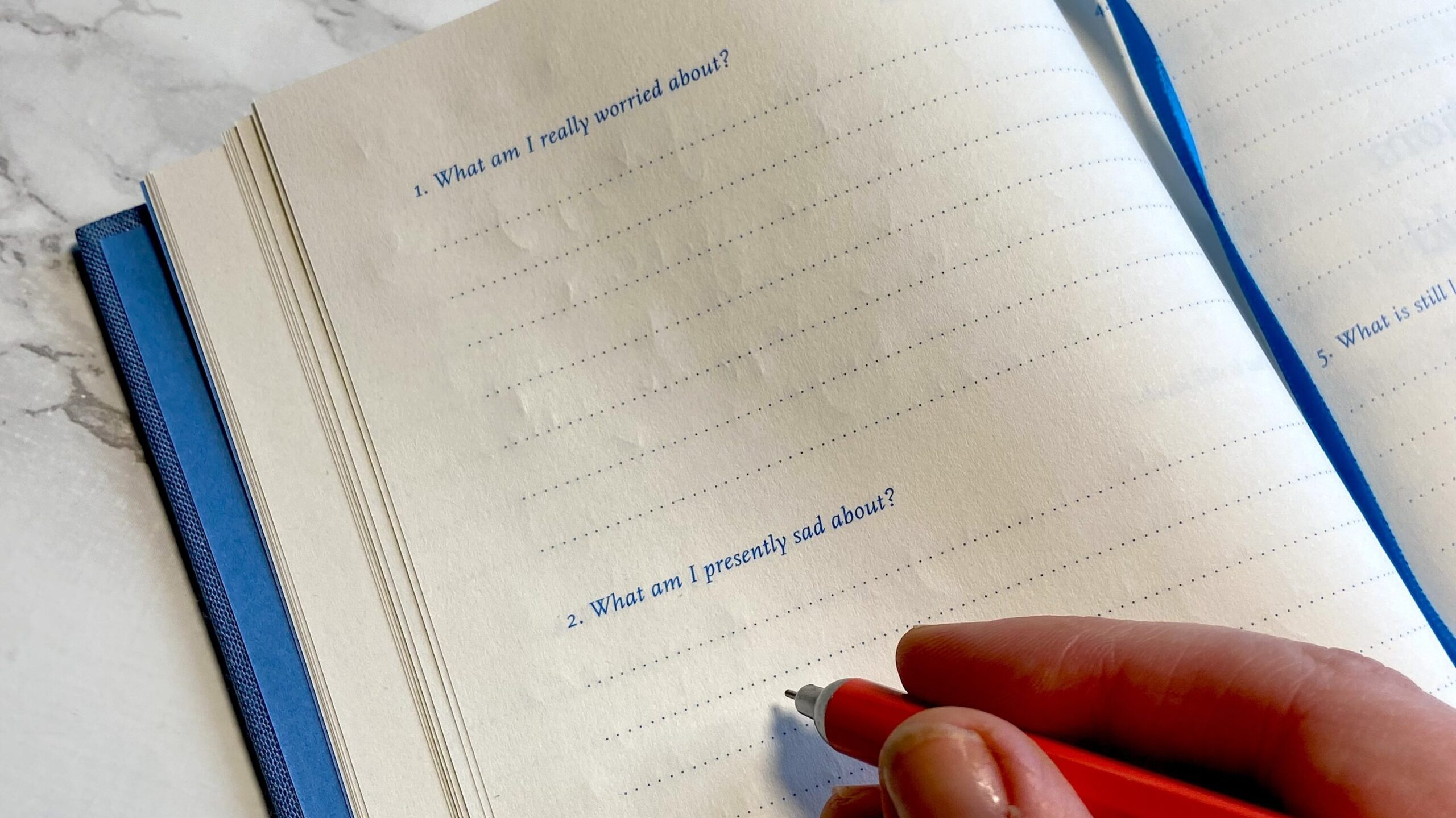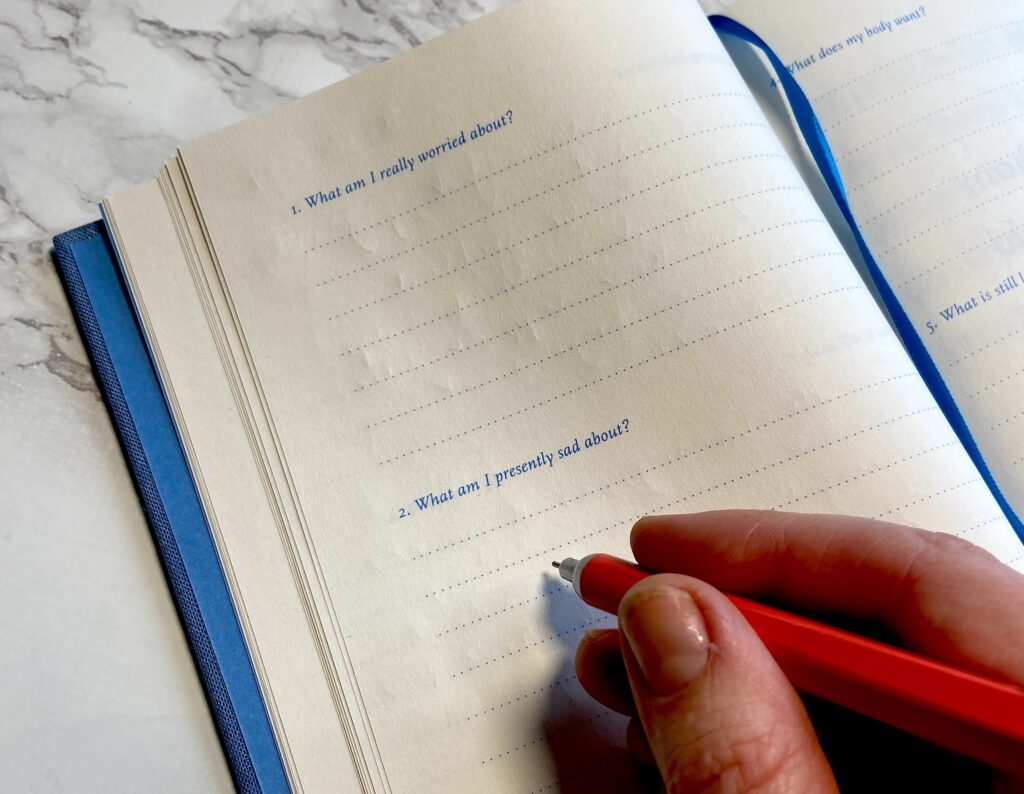
Feeling Overwhelmed? Here’s How Journalling Can Clear the Chaos
Have you ever rolled your eyes at the idea of journalling? Yeah, me too.
For a big chunk of my life I thought it was just one of those “airy-fairy” activities meant for people with way too much free time. Outpouring my feelings onto a page? Why? What was I even supposed to say? And let’s be honest, who really has time for that?
It didn’t help that it wasn’t immediately obvious what the benefits were, or even how to journal.
Journals were everywhere—flower-patterned covers, bold slogans, glittery designs—basically screaming “buy me” without ever explaining how to actually use them or why it mattered. journalling felt like a self-indulgent pastime for people who liked pontificating about life’s mysteries. And whilst that was me, I still didn’t feel I had the time.
And then I was kind of forced into it…indirectly.
Part of studying for my coaching qualification involved a whole module on reflection—essentially journalling in disguise. I didn’t realise it at the time, but this practice introduced me to the power of pausing and processing my thoughts.
We have around 60,000 thoughts a day.
Here’s the thing: we think a lot. Studies suggest we have around 60,000 thoughts a day. That’s a ton of mental clutter. Ever read a book, only to forget most of it the next day? That’s because your brain hasn’t had a chance to process the information. The same thing happens with our thoughts. If we don’t take time to sift through them, they turn into mental noise, leaving us frazzled and overwhelmed.
Imagine if you did process at least some of that information? And you could feel clearer, more decisive and less overwhelmed?
There’s evidence that journalling could help with what psychologists call, ‘Cognitive Diffusion’, which isa technique where you learn to distance yourself from having your thoughts, and instead observe them from a distance. This is believed to help stop overthinking, overwhelm (and even anxiety and depression at a deeper level.)
It’s thought that the very act of writing your thoughts down can help you to distance those thoughts and process them, so you can see them more clearly.
It’s just like being in one of those hedge mazes, where you can only see hedge either side of you, and you can’t see the actual exit clearly. In fact, the only way to be sure of getting out is to get a birds eye view (or get someone on the bridge overlooking the maze to share their birds eye view).
Being in your thoughts and your story is Just like being in that hedge-y maze – the only way to get clarity on your story/your reality/your thoughts is to view them from a distance.
This is what journalling can help you with. It can help you distance from those thoughts, so you can see them from a birds eye view. And voila – when you can see those thoughts more clearly, you can not only feel better, but you’ll make better decisions too.
Why journalling is a Game-Changer
If you’re a busy small business owner juggling endless tasks, here are three reasons why journalling might just become your new best friend:
- It Declutters Your Mind
Think of your brain like an inbox. Without journalling, it’s full of unread emails (a.k.a. thoughts). journalling is your way of hitting “archive.” It gives those 60,000 daily thoughts somewhere to go so they’re not clogging up your mental bandwidth. - It Brings Clarity
Journalling is like a mental mirror. When you write things down, you can step back and look at your thoughts from a bird’s-eye view. You start spotting patterns, uncovering what’s truly driving you, and finding answers to questions you didn’t even realise you had. - It Unlocks Creativity
Whether you’re writing LinkedIn posts, crafting social media content, or brainstorming your next big business idea, journalling can spark new perspectives. It’s a treasure trove of inspiration you didn’t know was sitting right under your nose.
Journalling Doesn’t Have to Be a Chore
The beauty of journalling is that there’s no one-size-fits-all approach. It can be as simple or as fancy pants (or not) as you like:
- Time Commitment: Spend 5 minutes or an hour—it’s up to you.
- Format: Write on paper, type on a laptop, record your voice, or even doodle.
- Style: Try guided prompts, free writing, or even short daily reflections.
I love how journalling can fit with anyone’s learning or thought processes – whether you’re visual, or more wordy, there’s a method for you…or you could try something different, depending on how you’re feeling.
The key is not to worry about whether you’re doing it right, but just have a go, and keep having a go.
I love to keep things simple, so one of my favorite tools right now is a guided journal by The School of Life. Each day, it asks these five thought-provoking questions:
- What am I really worried about?
- What am I presently sad about?
- Who has annoyed me, and how?
- What does my body want?
- What is still lovely?
Answering these questions takes just five minutes and helps me clear my head and pinpoint the small stresses that might otherwise linger.
Give It a Go
Journalling doesn’t have to be forever, but committing to even a month can work wonders. It’s not an indulgent luxury—it’s a practical tool for self-awareness, clarity, and peace of mind.
So grab a notebook, your phone, or a tablet, and try it out. You might be surprised at how much lighter you feel once those swirling thoughts find a home outside your head.


